MercoPress. South Atlantic News Agency
Tag: Real currency
-
Friday, March 6th 2015 - 08:44 UTC
The Brazilian currency slides past three to the dollar, fist time since 2004
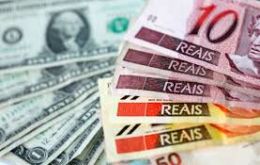
Brazil's currency, the Real slid past three to the dollar (3.01) for the first time in 10 years on Thursday, in the latest sign of weakness of Latin America's largest economy.
-
Wednesday, March 4th 2015 - 06:14 UTC
Brazil's currency at its weakest since September 2004...and sliding
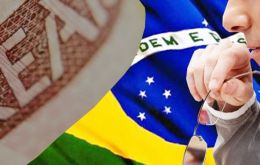
The Brazilian Real reached on Tuesday its weakest level against the dollar in more than 10 years, amid concern the country’s political and economic situation is growing worse.
-
Wednesday, December 17th 2014 - 00:53 UTC
Brazil's real sinks against US dollar to lowest rate in 10 years

The currency closed at R$ 2.76 per US$ 1 dollar. Domestic politics, international oil prices, US Fed measures and Russian ruble drop to blame.
-
Saturday, October 4th 2014 - 10:38 UTC
Investors on edge waiting for the results of Sunday's voting in Brazil

Latin American currencies weakened on Friday after strong U.S. jobs data was seen as increasing the likelihood of higher interest rates in the world's largest economy, while Brazil markets fluttered in the last trading session before Oct. 5 elections.
-
Tuesday, September 30th 2014 - 04:40 UTC
Brazils' Bovespa and Real plunge as Dilma climbs in polls with less than a week to election

Brazilian financial markets took a beating on Monday after polls showed President Dilma Rousseff pulling past challenger Marina Silva ahead of Sunday's election. The Brazilian currency closed at its weakest level since December 2008 while the benchmark Bovespa stock index notched its biggest one-day loss in over three years.
-
Monday, July 14th 2014 - 23:09 UTC
Paraguay's currency steadily becoming a 'strong' currency based on positive indicators
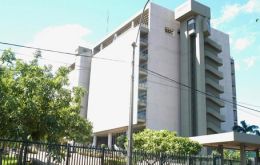
The Paraguayan currency, Guaraní, is expected to revalue 1.4% against the US dollar by the end of the year becoming one Latam's strongest given its positive macroeconomic indicators. This follows a strong performance during the first half of the year when the price of the dollar in the capital Asunción wholesale money exchanges dropped from 4.450 Guaraní to 4.240, according to private consultants “Consensus Economics”.
-
Wednesday, July 2nd 2014 - 07:27 UTC
Two decades of the Real, the currency that helped Brazil trust financial stability
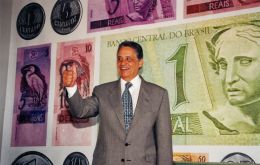
Twenty years ago, first July 1994, after decades of financial turmoil, Brazil introduced its current currency, the Real, marking a turning point in the country's fight against hyperinflation.
-
Thursday, October 10th 2013 - 00:57 UTC
Brazilian annual inflation to September the lowest in nine months
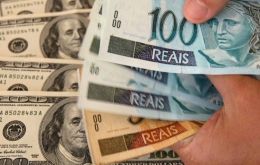
Annual inflation in Brazil reached its lowest level in nine months, but the country still shows signs it hasn't yet come to grips with persistently higher prices. Brazil's 12-month inflation reading continued to retreat, falling to 5.86% in September, the Brazilian Institute of Geography and Statistics, or IBGE, said Wednesday.
-
Tuesday, August 20th 2013 - 23:35 UTC
The sliding Brazilian currency has depreciated 18% in the last twelve months

The Brazilian currency Real, which is the region’s reference, is undergoing one of its major depreciations against the US dollar in the last four years because of the poor performance of its economy and the tendency is to continue, at least in the short term, given the uncertainty about US monetary policy.
